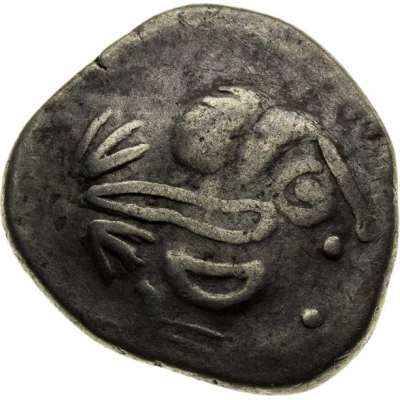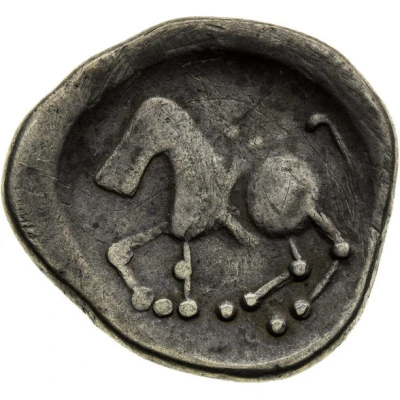


© Macho & Chlapovič a.s.
Tetradrachm Sattelkopfpferd Type
| Silver | 7.48 g | 23.4 mm |
| Issuer | Dacians of Muntenia |
|---|---|
| Type | Standard circulation coin |
| Value | 1 Drachm |
| Currency | Drachm |
| Composition | Silver |
| Weight | 7.48 g |
| Diameter | 23.4 mm |
| Shape | Round (irregular) |
| Technique | Hammered |
| Demonetized | Yes |
| Updated | 2024-10-09 |
| Numista | N#189061 |
|---|---|
| Rarity index | 97% |
Reverse
Galloping horseman left.
Comment
Vârteju-Bucureşti Type according to Preda MGD.Dembski 1227;
• Example #1 (7.91g, 22mm, 11h, Very Fine):
© Image courtesy of Roma Numismatics Limited
◦ Ex-Hermann Lanz Collection; published in Michaela Kostial - "Kelten im Osten. Gold und Silber der Kelten in Mittel und Osteuropa, Sammlung Lanz", München, 1997, #644;
◦ Auctioned by Roma Numismatics Ltd, Auction XVIII, 29 September 2019, Lot 161. Sold for 95 GBP;
Interesting fact
The Tetradrachm coin from the Dacians of Muntenia, which features a horse's head on the obverse (front) side, was used as a form of currency during the 1st century AD. It was made of silver and weighed around 7.48 grams, making it a significant piece of currency at the time. It's interesting to note that the design of the coin was influenced by Greek coinage, as the Dacians were known to have had strong cultural and trade ties with the Greeks. The horse's head on the coin is believed to represent the Dacian god of war and fertility, and the reverse (back) side of the coin often featured an image of a goddess or a mythological creature. Overall, the Tetradrachm coin from the Dacians of Muntenia is a fascinating piece of history that provides insight into the culture, trade, and beliefs of ancient civilizations.